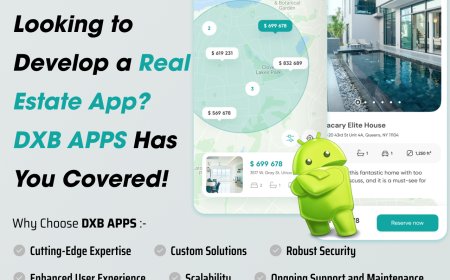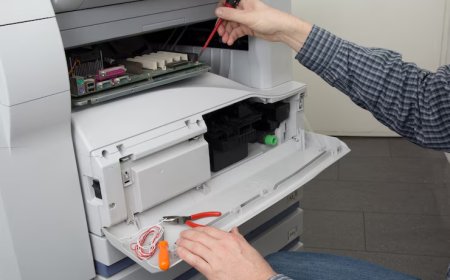Tips for First-Time Users of Phone Diagnostic Software
New to phone diagnostics? Learn how phone diagnostic software and expert help from Phone Clinix can keep your device running smoothly.
In todays digital age, smartphones play an essential role in work, entertainment, and communication. So when performance issues ariselike lag, overheating, rapid battery drain, or crashing appsthey can seriously disrupt daily life. Fortunately, phone diagnostic software has made it easier than ever for users to take control of their phones health and performance.
If youre new to the idea of diagnosing your own smartphone, dont worry. With the right tools and a few helpful tips, you can start identifying issues, improving performance, and even avoiding unnecessary repair costs. Experts at Phone Clinix, a trusted name in phone repairs and diagnostics, strongly encourage users to learn the basics of diagnostics before jumping straight into professional servicing.
In this guide, well walk you through how to use phone diagnostic software effectively as a first-timer, what to look out for, and how Phone Clinix complements these tools for more advanced needs.
What is Phone Diagnostic Software?
Phone diagnostic software is designed to scan, test, and report the status of a phones hardware and software. From battery life and storage usage to screen responsiveness and sensor activity, these tools provide a detailed view of how well your phone is functioning.
While some devices come with built-in diagnostic tools (like Samsungs Members app or Apples Support features), third-party software often offers a broader set of testing capabilities.
Why First-Time Users Should Try Diagnostics
Using phone diagnostic software can help:
-
Catch performance issues early
-
Save money by avoiding unnecessary repairs
-
Learn more about your phones functionality
-
Track system changes over time
-
Identify underperforming or problematic apps
And if further help is needed, having diagnostic data makes your visit to a repair center like Phone Clinix faster and more efficient.
Tip #1: Start with a Trusted App or Tool
As a beginner, avoid random apps that promise instant fixes. Choose diagnostic tools with strong reviews and a reputation for accuracy. Look for features like:
-
Battery health analysis
-
RAM and CPU usage monitoring
-
Sensor testing (GPS, gyroscope, accelerometer)
-
Network connectivity reports
-
App performance tracking
Many reliable tools are available for free or offer trial versions. Make sure the software supports your phones OS (Android or iOS) and provides detailed yet easy-to-understand reports.
Tip #2: Run a Full Device Scan First
Once the software is installed, run a complete system scan. This first step gives you a broad overview of your phones health and sets a baseline for future comparisons. The scan will often test:
-
Battery charging behavior
-
Internal storage capacity and performance
-
Running background processes
-
Screen and touch functionality
-
Sound and mic quality
-
Camera tests
-
Sensor accuracy
Be patient, as some comprehensive scans may take several minutes.
At Phone Clinix, technicians begin every evaluation with a full diagnostic scan using professional-grade software. As a first-time user, doing the same at home can reveal performance insights you didnt know existed.
Tip #3: Learn to Interpret the Results
One of the biggest challenges for beginners is understanding the data. Most phone diagnostic software tools will use indicators such as green (good), yellow (warning), or red (problem) to guide you.
Heres how to interpret some key sections:
-
Battery Health: Look for reduced capacity or rapid discharge rates. If your battery health is below 80%, consider replacing it.
-
RAM Usage: High memory usage when idle might suggest memory leaks or apps running excessively in the background.
-
CPU Load: Spikes may indicate overheating or processor-intensive apps.
-
Storage: Devices with less than 10% available storage often experience lag or crashes.
If youre unsure about what a result means, look for in-app tips or online guides. Or better yet, bring your report to Phone Clinix, where technicians can interpret the data for you at no cost with a basic checkup.
Tip #4: Use the Info to Improve Performance
Now that you have diagnostic results, take action. Here are a few beginner-friendly ways to apply your findings:
-
Delete unused apps or files if storage is nearly full
-
Update or uninstall apps that are consuming excess memory
-
Adjust settings to limit background activity
-
Disable unnecessary system services like Bluetooth or location tracking
-
Clear system cache to improve speed
Small changes like these can significantly improve your devices responsiveness and longevity.
Tip #5: Run Regular Checkups
Dont wait for something to go wrong to run diagnostics. Monthly scans can help identify potential issues before they cause major disruptions.
Many phone diagnostic software platforms allow you to schedule regular tests or keep logs for comparison over time. This is especially helpful for tracking changes in battery health, app behavior, or thermal patterns.
Just like regular health checkups for your body, scheduled diagnostics for your phone can prevent performance dips and even data loss.
Tip #6: Know When Its Time to Call the Pros
As empowering as self-diagnostics are, they dont replace professional expertiseespecially when it comes to physical repairs or deep hardware issues.
Here are some signs its time to visit Phone Clinix:
-
The phone wont turn on, even after charging
-
Diagnostics show persistent overheating or CPU failure
-
Your screen or battery is physically damaged
-
Software errors persist despite resets and updates
-
Youre unsure how to fix a flagged issue
Phone Clinix technicians use advanced phone diagnostic software that goes beyond typical apps, testing components like power ICs, charging ports, signal antennas, and even logic boards. They also provide full repair solutions and data recovery if needed.
Tip #7: Ask for a Diagnostic Report
Whether you run your own test or go to a shop, having a written or digital diagnostic report is invaluable. It provides a clear summary of whats wrong, what passed inspection, and what needs to be done.
At Phone Clinix, each repair starts and ends with a diagnostic report one before the work begins, and one after its completed. This helps customers see the full scope of what was fixed or still needs attention.
As a first-time user, saving or printing your own report from your diagnostic tool helps you:
-
Track your phones performance over time
-
Compare results after making changes
-
Share the report with technicians if further support is needed
Conclusion: A Smart Start to Smarter Phone Care
Using phone diagnostic software for the first time may feel intimidating, but its a valuable step toward taking control of your smartphones health. From spotting small issues early to improving performance and preventing unnecessary expenses, diagnostics empower you to be proactive instead of reactive.
For deeper problems or physical repairs, professionals like Phone Clinix are always ready to help. They not only diagnose but also provide the tools, parts, and expertise needed to fully restore your device. Still, even they encourage users to stay informed, and that begins with understanding how diagnostics work.
So whether you're maintaining a brand-new flagship device or trying to keep your older phone in good shape, start by learning the basics and let phone diagnostic software guide your way.































